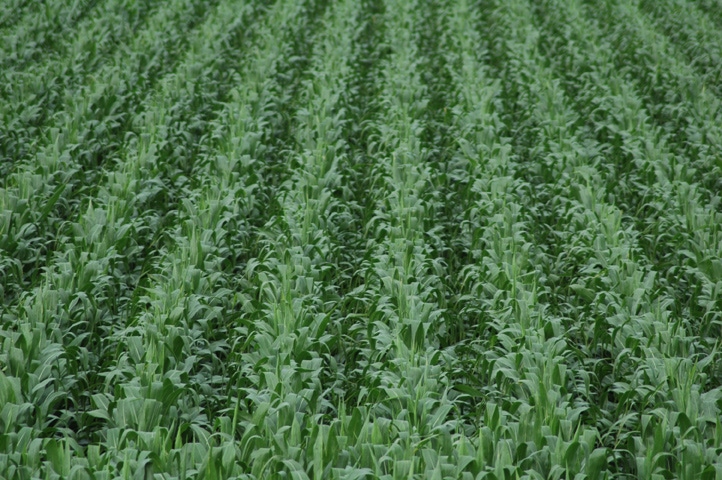June 20, 2011

A large number of factors have contributed to the higher prices of corn and other commodities over the past year. The beginning of the price increase can be traced to the USDA’s forecast of 2010 corn planted acreage and the estimate of June 1 corn stocks released on June 30, 2010, says University of Illinois Agricultural Economist Darrel Good.
“The USDA’s June 2010 forecast of corn planted acreage came in at 87.872 million acres, 926,000 fewer than indicated in the March 2010 Prospective Plantings report. The market was generally expecting acreage to exceed March intentions,” he says.
The final planted acreage estimate for 2010 was 320,000 acres larger than the June forecast. Area harvested for grain was 441,000 acres larger than was forecast in June, but declining yield prospects more than offset the slightly larger acreage estimates, he adds.
The USDA’s estimate of June 1, 2010, corn inventories was about 300 million bushels – or 6.5% – smaller than were anticipated by the market and about 245 million bushels smaller than our pre-report calculation, he says.
“The low stocks estimate implied a level of feed and residual use during the third quarter of the 2009-2010 marketing year that was too large to be believed. Subsequently, the Sept. 1, 2010, corn stocks estimate came in larger than expected so that feed and residual use of corn during the final quarter of the year appears abnormally small,” he says.
The estimates of feed and residual use for the last half of the year and for the entire year appear logical, but the distribution between the third and fourth quarters was unusual, he notes.
“A year later, there is once again a major focus on the USDA’s Grain Stocksand Acreage reports to be released on June 30,” Good says. “For the June 1 stocks estimate, it is useful to calculate what the inventory should have been based on the estimate of March 1 stocks, known consumption in March, April and May (domestic processing uses and exports) and an estimate of feed and residual use during the quarter.”
Based on weekly USDA estimates and Census Bureau estimates for March and April, exports during the March-May quarter were near 504 million bushels, Good says.
“Based on weekly estimates of ethanol production and the projected rate of use for other food and industrial products, total processing use of corn during the quarter was likely near 1.62 billion bushels,” he says.
For the year, the USDA projects feed and residual use of corn at 5.15 billion bushels. USDA has estimated use during the first half of the year at 3.614 million bushels. If the projection for the year is correct, 1.536 billion bushels will be consumed in the last half of the year, he notes.
“Fourth-quarter feed and residual use will be influenced by the level of wheat feeding, which is expected to be large due to the much larger soft red winter wheat crop and the current low price of wheat relative to corn,” he says.
Based on the number of livestock being fed, use during the third quarter should have been relatively large. Third-quarter use is estimated at 950 million bushels, equal to that of two years ago. Total consumption during the quarter is estimated at 3.074 billion bushels, which points to June 1 stocks of 3.455 billion bushels. Stocks between 3.4 and 3.5 billion bushels appear to be a reasonable expectation, he adds.
“For soybeans, the magnitude of the domestic crush and exports during the March-May quarter can be fairly closely predicted based on estimates from the USDA, Census Bureau, and National Oilseed Processor Association,” Good says.
The domestic crush during the quarter was likely near 394 million bushels, whereas exports were near 230 million bushels. The crush will be known with the release of the Census Bureau crush report on June 23. Seed, feed and residual use during the quarter is highly variable from year to year, he says.
“Estimated use during the first half of the current year was unusually large, suggesting that third-quarter use could be less than normal. If use during the third quarter was near 28 million bushels, June 1 stocks should have been near 600 million bushels,” he says.
According to Good, planted and harvested acreage forecasts for both corn and soybeans are more difficult to anticipate than is typically the case. Late planting in the eastern Corn Belt and northern Plains along with flooding in the Ohio, Mississippi and Missouri River Valley is thought to have reduced total cropland acres planted relative to intentions reported in the USDA’s March Prospective Plantingsreport. Intentions were for 92.2 million acres of corn and 76.6 million acres of soybeans.
“The mix of acreage is still difficult to anticipate,” he says. “Most believe that corn acreage is less than intended, but ideas have shifted from a loss of 3 to 4 million acres to a loss of less than 2 million acres. Corn acreage may exceed intentions in some western areas,” he says.
Last year’s experience with the June 30 reports, along with the high degree of uncertainty about planted and harvested acreage, highlights the importance of this year’s reports, Good adds.
You May Also Like




